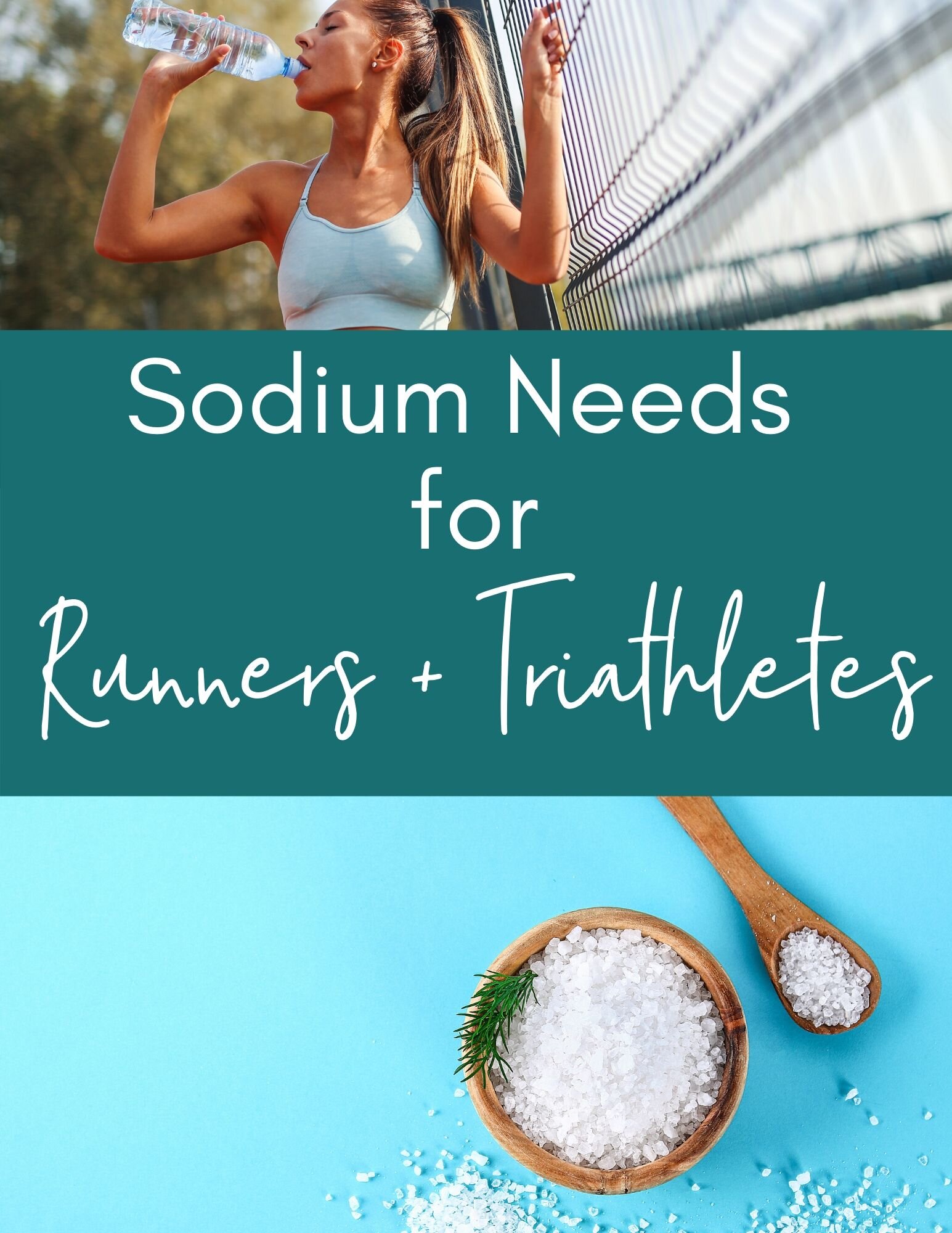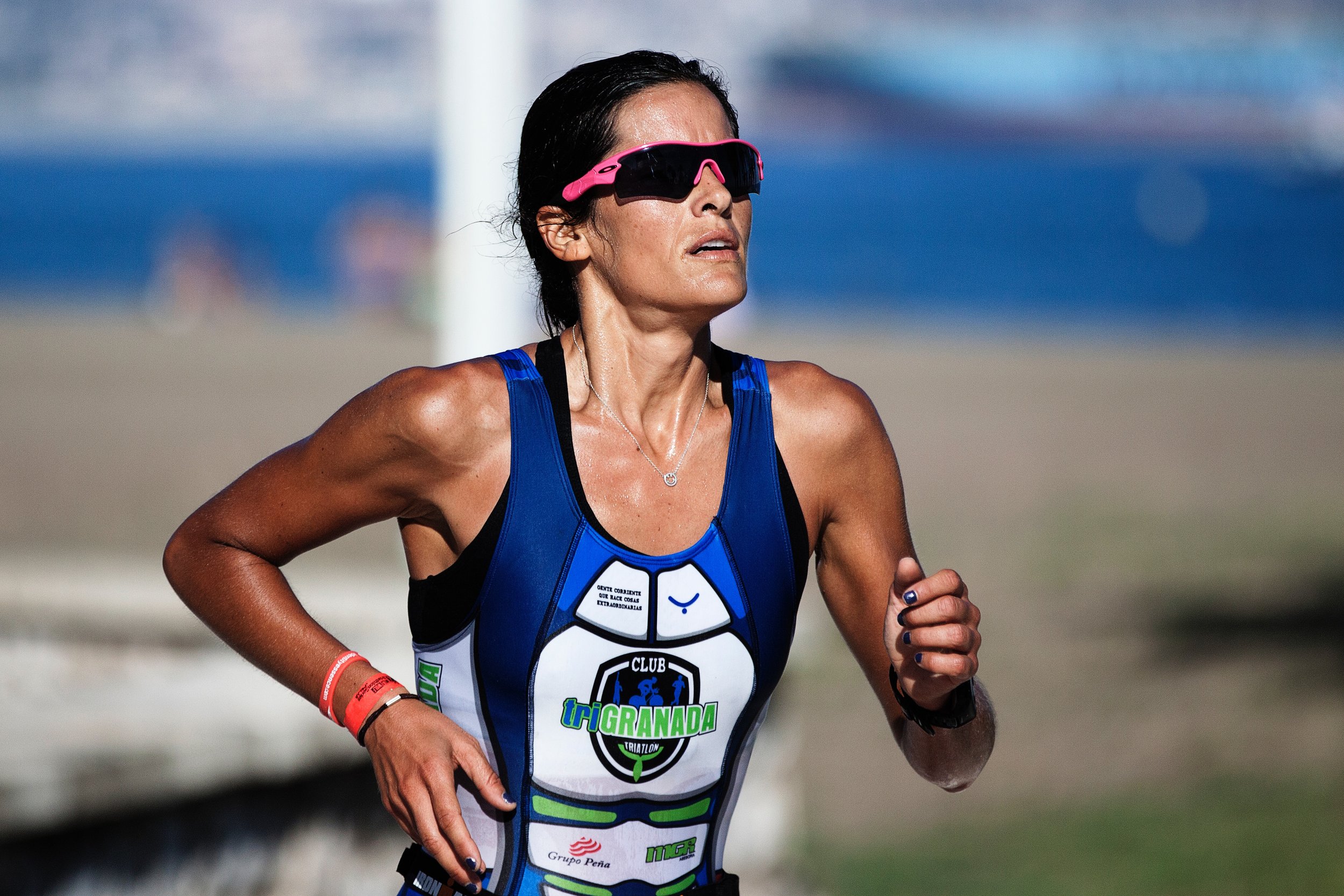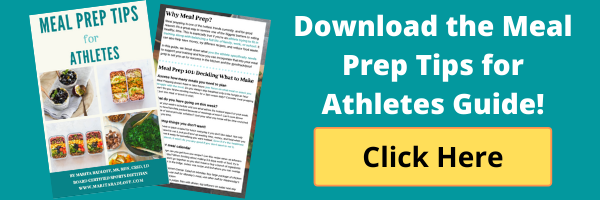Sodium Needs for Endurance Athletes
More and more people are getting active and training for endurance races, like half marathons, marathons, and triathlons. However, they might be neglecting a key nutrient because of health recommendations that can make-or-break you on race day: sodium.
The Institute of Medicine (IOM) recommends the Adequate Intake (AI) for the general population is 1500 mg of sodium per day, so you want to aim for around that amount each day, especially if you have other diseases, like high blood pressure. The Upper Limit (UL) is set at 2300 mg per day, meaning the guideline is not to exceed that amount. But these recommendations can be harmful for athletes, especially those who train outside and live in hot or humid climates.
Is sodium necessary for runners and triathletes?
Why is Sodium Necessary for Athletes?
Before we dive into how much sodium athletes need, we need to understand why humans need it. Sodium is an electrolyte, along with calcium, potassium, magnesium, chlorine, and phosphate. Electrolytes are minerals in your body that have an electric charge. They exist in your urine, blood, tissues, and body fluids.
Electrolytes help to balance pH level, remove waste out of your cells and nutrients into cells, balance the amount of water in your body, and ensure that your nerves, muscles, heart, and brain function properly. The last two functions are where sodium plays its largest role. We mostly consume sodium from food through table salt, which is a combination of sodium and chloride, and excrete it through urine and sweat.
The level of sodium in your body can become too low or too high based on the amount of water in your body. If the amount of water you consume isn’t equal to the amount you lose, you can become dehydrated (too little water) or overhydrated (too much water). Certain medications, diarrhea, vomiting, sweating, and liver or kidney problems cause these imbalances.
If you’re training for over an hour, you need to replenish sodium lost in sweat.
Athletes need more sodium because it is lost while sweating. The amount of sodium excreted in sweat is large and depends on many factors, such as body mass, training level, temperature, clothing, gender, and heat/humidity acclimatization. Some athletes are also “salty sweaters;” if your workout clothes or hat and skin have white residue or streaks after training, it’s likely you are a salty sweater and lose more sodium than others. Typically, those who are untrained, in the beginning stages of heat acclimation, and men lose more sweat.
If you lose too much sweat while training and don’t replenish with electrolytes and fluid, you put yourself at risk for muscle cramps and poor recovery. Salt intake during intense training can also help prevent hyponatremia, or low sodium in the blood. Hyponatremia has become more prevalent in endurance events, especially ultra-endurance events or those who are on the course for longer periods of time.
Hyponatremia is a potentially life-threatening condition that can cause fatigue, dehydration, swelling, nausea, vomiting, seizures, confusion, slurred speech, moderate to severe muscle cramps, and losing consciousness, possibly leading to death. Hyponatremia occurs when sweating causes disproportionate sodium loss or an excessive intake of plain water, which dilutes the level of sodium in the blood. This is why it’s imperative to drink sports drinks containing electrolytes and not plain water for any physical activity over an hour.
How much Sodium do I Need for Endurance Events?
We now know we need sodium for training and race day- but how much you need to avoid cramping and potentially hyponatremia is a bit more complicated. You’ve likely heard that many Americans need to cut back on sodium, but this doesn’t necessarily apply to athletes and recreational athletes training over an hour.
The average American consumes between 8 to 12g of table salt per day, which is 20-30 times more than the amount of sodium needed to replace everyday sodium losses from things like sweat, bowel movements, and urine. Table salt, also known as sodium chloride, is 40% sodium, so there are 3.2-4.8 grams of sodium in 8 to 12 g of salt.
This excessive consumption of sodium has lead to an increase in rates of hypertension. Hypertension affects over 3 million people in the US, and can increase risk for stroke, heart disease, and death. Reducing sodium intake is the hallmark diet change for reducing blood pressure since salt makes your body retain water. The more extra water stored in your body, the higher your blood pressure rises. The recommendation for sodium for the general population is 2300 mg (about 1 teaspoon of table salt), and for those with hypertension, it falls to 1500 mg per day.
But athletes require more salt than the general population. Unless an athlete has a contraindication to increasing salt intake (like hypertension or kidney disease), most athletes should be liberal about consuming salt.
So how much salt do athletes need? Since sweat loss varies greatly from person to person, it’s difficult to determine an exact number that should be consumed. For instance, studies following football and tennis players found sodium losses ranging from 800 to 8,500 mg over two hours. Only a lab test can determine exactly how much sweat you are losing while training- but most athletes don’t have access to this.
The baseline recommendation is 500-700 mg of sodium per hour but this increases upwards of 2000 mg + if you’re unconditioned, training in heat/humidity, a heavy or “salty sweater,” or exercising for several hours at a time. Athletes who fall into these categories need to be replenishing their fluid and electrolytes consistently in the days before, during, and after exercise.
Strategies for Including Sodium
In order to avoid the downfalls of not getting enough sodium in and around workouts, it’s crucial to remember that the guidance of cutting back on salt for the general population doesn’t apply to athletes. Athletes regularly training over an hour need to replenish lost sodium, and reducing sodium intake is the last thing someone training for a marathon or Ironman should do.
It’s crucial to include sports drinks and not just water during training.
In and around workouts over an hour or over 35 minutes in hot/humid climates, follow these general guidelines:
2-3 Hours Prior to Training
Consume 16-24 ounces of fluid, preferably water and a sports drink that contains sodium and other electrolytes. Choose a sports drink with at least 150 mg/sodium per 24 oz. If you can find one with more (upwards of 250 mg plus) that’s even better. If you are a salty sweater, be sure to include foods that also have sodium, either in your pre-workout meal or with sports foods.
This should not be done for the first time on race day! You need to train with the nutrition you plan to race with, so experiment with how much fluid works and what types you like. Try different brands and assess how you feel in the first 10-15 minutes of your workout, halfway, and after your workout. If you felt sloshing, had cramping, or felt like you had to use the restroom the entire time, try a different brand.
30 Minutes Before Training
Drink 8 oz of fluid, either from a sports drink or water.
During Training
If you’re doing an activity where you can eat more readily, like biking, try to include things like pretzels, popcorn, or crackers to get enough sodium. These are also great to combat flavor fatigue from all the sweet-heavy sports foods. If you’re running and can’t fathom the thought of eating popcorn while running, stick to gels, chomps, jellybeans, and gus that contain sodium. You should also be staying on top of hydration with a sports drink that contains (you guessed it!) electrolytes. Aim to drink 4-6 ounces of water or a sports drink every 15-20 minutes. As discussed above, your recommended amount of sodium during exercise depends on many factors. Start with at least 500 mg/sodium per hour of exercise and increase from there.
New products like Base Electrolytes and Osmo Preload are a great way to get sodium in if you are a salty sweater. Taken before a long training session or tough workout, these work to combat the effects of electrolyte loss and increase recovery.
After Training
Sweat rates vary greatly and can range from as much as 1-4 lbs per hour. One way to help determine your sweat rate without having to go to a lab is to weigh yourself before and immediately after training. For every pound of weight lost during training, consume 16-24 ounces of water. If you lost close to 4 lbs, consider adding more fluid before and during your training.
Daily Strategies for Adding Sodium
For the everyday, athletes should liberally salt their food- but in a meaningful way. This doesn’t necessarily mean go out and buy all of the most processed and sodium-laden foods available, such as frozen pizza, deli meat, frozen entrees, and heavily processed breads. Instead, think about adding salt while cooking and at the table to taste, especially if you live in a hot or humid climate. Eating foods that are saltier will help you stay hydrated and increase performance.
How to include sodium daily to increase performance:
· Cook with salt and use the salt shaker at the table
· Include things like crackers, salted potatoes, and pretzels to your training instead of regular sports foods
· Snack on salted foods like nuts, jerky, pickles, olives, popcorn, and chips
· Have chocolate milk post-workout since it contains more sodium than regular milk
Cook with salt and salt your foods at the table, especially if you live in a hot or humid climate.
Replenishing lost sodium from training is crucial to maintaining performance, avoiding injury, and staying hydrated. You don’t need a fancy lab test to determine how much sodium is lost during training. If you follow these guidelines and experiment with what works, you should be able to avoid the pitfalls of sodium losses. If this is overwhelming or too much to take on by yourself, let me know! I can create a hydration and electrolyte protocol for you that takes the guesswork out of training and race day. Shoot me an email here so we can get you ready for race day!







